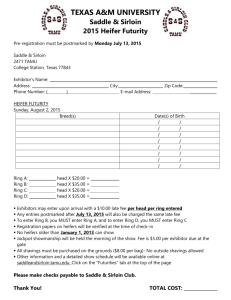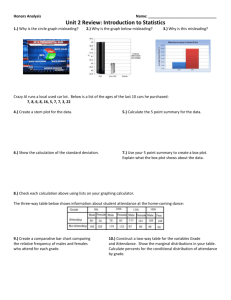Classifying Rings Worksheet.
advertisement
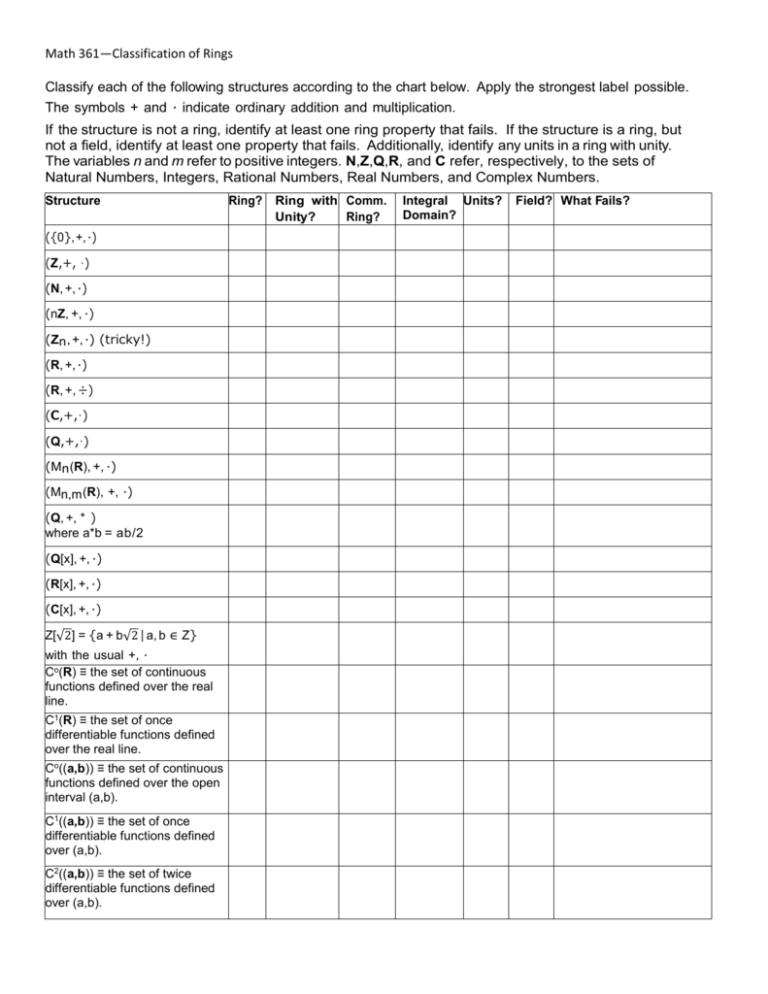
Math 361—Classification of Rings
Classify each of the following structures according to the chart below. Apply the strongest label possible.
The symbols + and · indicate ordinary addition and multiplication.
If the structure is not a ring, identify at least one ring property that fails. If the structure is a ring, but
not a field, identify at least one property that fails. Additionally, identify any units in a ring with unity.
The variables n and m refer to positive integers. N,Z,Q,R, and C refer, respectively, to the sets of
Natural Numbers, Integers, Rational Numbers, Real Numbers, and Complex Numbers.
Structure
({0}, +, ·)
(Z,+, ·)
(N, +, ·)
(nZ, +, ·)
(Zn , +, ·) (tricky!)
(R, +, ·)
(R, +, ÷)
(C,+,·)
(Q,+,·)
(Mn (R), +, ·)
(Mn,m (R), +, ·)
(Q, +, * )
where a*b = ab/2
(Q[x], +, ·)
(R[x], +, ·)
(C[x], +, ·)
Z[√2] = {a + b√2 | a, b ∈ Z}
with the usual +, ·
Co(R) ≡ the set of continuous
functions defined over the real
line.
C1(R) ≡ the set of once
differentiable functions defined
over the real line.
Co((a,b)) ≡ the set of continuous
functions defined over the open
interval (a,b).
C1((a,b)) ≡ the set of once
differentiable functions defined
over (a,b).
C2((a,b)) ≡ the set of twice
differentiable functions defined
over (a,b).
Ring?
Ring with Comm.
Unity?
Ring?
Integral Units?
Domain?
Field? What Fails?
Math 361—Classification of Rings
Part 2. Group Exercise.
Write the names of as many rings in the best possible position of the Venn Diagram below. The best possible position is
the place where a particular ring enjoys the most properties.
Ring
Commutative Ring
Integral Domain
PID
Field






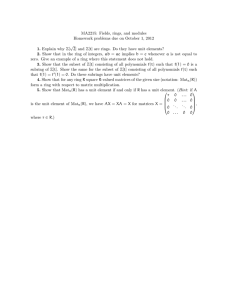
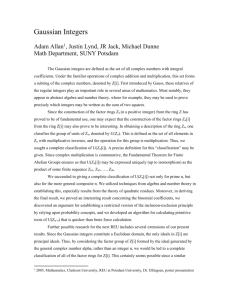
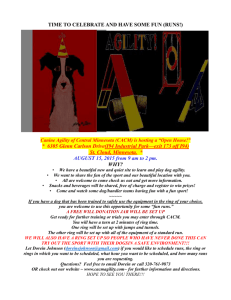
![Read the story [pdf, 15kb]](http://s3.studylib.net/store/data/007120651_2-2865a24f3154f2c5f351d9eea66d52fa-300x300.png)
